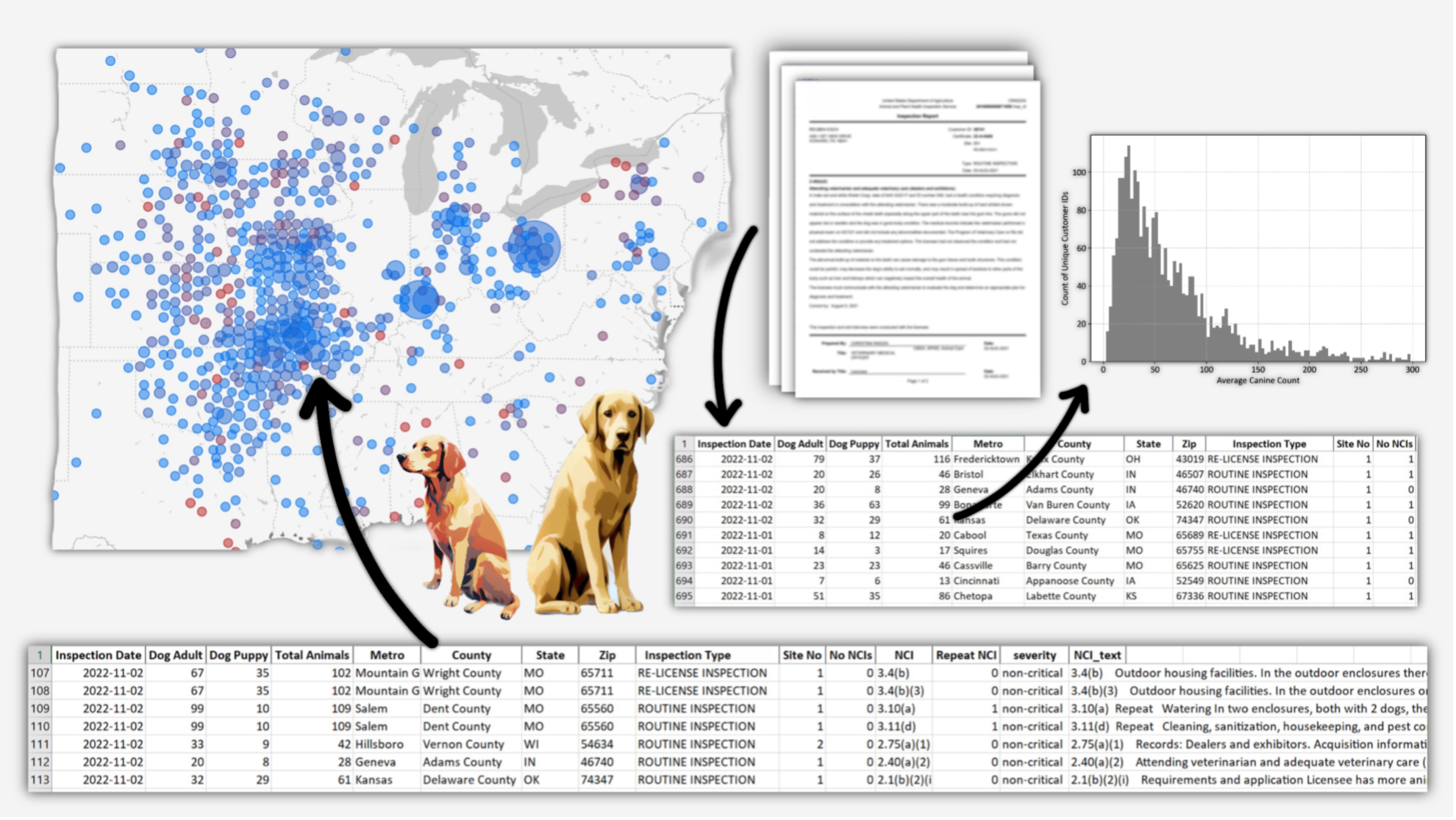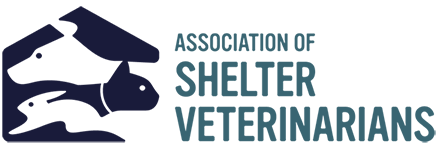Harnessing Big Data in the Animal Welfare Industry: Utilizing Data Science to Improve Regulatory Oversight of Commercial Dog Breeding
DOI:
https://doi.org/10.56771/jsmcah.v2.65Keywords:
Commercial Dog Breeding, USDA Inspection Compliance, Canine Welfare, Big Data, Data ScienceAbstract
Introduction: In the age of Big Data, the animal welfare industry stands to benefit from data-driven decision making, particularly in commercial dog breeding. Despite its potential, many organizations and regulatory bodies, such as the United States Department of Agriculture (USDA), face significant challenges in organizing and using it effectively. The existing challenges limit the extent to which the vast amount of data collected by the USDA can be used to improve regulatory oversight and promote animal welfare. This study explored the potential of leveraging publicly-available inspection report data to inform animal welfare standards and identify areas of improvement.
Methods: We formulated an innovative approach for extracting, cleaning, and structuring data from the Public Search Tool (PST) database. Our approach involved the use of customized web-scraping tools and data manipulation techniques, including automatic data retrieval, transformation of inspection reports into a text-friendly format, and pattern recognition for collating pertinent data elements. We conducted descriptive statistical analyses on the assembled dataset to set the stage for a comprehensive exploration of inspection reports from Class ‘A’ commercial dog breeding facilities.
Results: Our study produced an extensive dataset detailing compliance with animal welfare standards at Class ‘A’ commercial dog breeding facilities across the United States from 2014 to 2023. Preliminary analysis revealed prevalent areas of non-compliance, such as inadequate veterinary care and substandard housing conditions. The dataset facilitated a deep analysis of animal welfare practices within the commercial dog breeding industry, providing insights across geographical locations and facility sizes.
Conclusion: Our study underscores the potential of harnessing Big Data to inform regulatory decisions and improve animal welfare within commercial dog breeding. It introduces a method to transform publicly available data into an accessible format. This allows us to go beyond anecdotal evidence into comprehensive assessments, facilitating constructive dialogue and effective policy-making. Further research leveraging advancements is recommended to deepen insights and encourage collaborative efforts to elevate animal welfare standards.
Downloads
References
Cao L. Data science: a comprehensive overview. ACM Comput Surv. 2017;50(3):43:1–43:42. doi: 10.1145/3076253
Chen H, Chiang RHL, Storey VC. Business intelligence and analytics: from big data to big impact. MIS Quarterly. 2012;36(4):1165–1188. doi: 10.2307/41703503
Elgendy N, Elragal A. Big data analytics: a literature review paper. Lect Notes Comput Sci. 2014;8557:214–227. doi: 10.1007/978-3-319-08976-8_16
Ajah IA, Nweke HF. Big data and business analytics: trends, platforms, success factors and applications. Big Data Cogn Comput. 2019;3(2):32. doi: 10.3390/bdcc3020032
Grover V, Chiang RHL, Liang TP, Zhang D. Creating strategic business value from big data analytics: a research framework. J Manag Inf Syst. 2018;35(2):388–423. doi: 10.1080/07421222.2018.1451951
Widmar NO. ‘Big Data’ in animal industries. Purdue University Center for Food and Agricultural Business. Published September 13, 2021. https://agribusiness.purdue.edu/consumer_corner/big-data-in-animal-industries/. Accessed October 3, 2023.
White BJ, Amrine DE, Larson RL. big data analytics and precision animal agriculture symposium: data to decisions. J Anim Sci. 2018;96(4):1531–1539. doi: 10.1093/jas/skx065
Widmar NO. ‘Big Data’ provides insights to public perceptions of USDA. Choices. Published 2019;(Quarter4). http://www.choicesmagazine.org/choices-magazine/submitted-articles/big-data-provides-insights-to-public-perceptions-of-usda. Accessed October 3, 2023.
Croney C. Turning up the volume on man’s best friend: ethical issues associated with commercial dog breeding. J Appl Anim Ethics Res. 2019;1:1–22. doi: 10.1163/25889567-12340011
Stella J, Shreyer T, Ha J, Croney C. Improving canine welfare in commercial breeding (CB) operations: evaluating rehoming candidates. Appl Anim Behav Sci. 2019;220:104861. doi: 10.1016/j.applanim.2019.104861
McMillan FD, Duffy DL, Serpell JA. Mental health of dogs formerly used as ‘breeding stock’ in commercial breeding establishments. Appl Anim Behav Sci. 2011;135(1–2):86–94. doi: 10.1016/j.applanim.2011.09.006
Bir C, Croney CC, Widmar NJO. US residents’ perceptions of dog welfare needs and canine welfare information sources. J Appl Anim Welfare Sci. 2019;22(1):42–68. doi: 10.1080/10888705.2018.1476862
Marceau JF. How the animal welfare act harms animals. Published online May 9, 2018. https://papers.ssrn.com/abstract=3176101. Accessed July 20, 2023.
Animal Care Program Oversight Of Dog Breeders. USDA Office of Inspector General; 2021. https://usdaoig.oversight.gov/sites/default/files/reports/2023-07/33601-0002-31finaldistribution_0.pdf. Accessed July 28, 2023.
United States Government Accountability Office. Animal and plant health inspection service animal care program inspections of problematic dealers. Washington, DC, USA:USDA Office of Inspector General; 2010.
Audit of Animal Care Facilities Inspection Program. The Office of State Auditor of Missouri Claire McCaskill; 2001. www.auditor.state.mo.us. Accessed July 28, 2023.
Animal Welfare Act | National Agricultural Library. https://www.nal.usda.gov/animal-health-and-welfare/animal-welfare-act. Accessed May 31, 2023.
Animal and plant health inspection service inspection reports search. USDA. https://aphis-efile.force.com/PublicSearchTool/s/inspection-reports. Accessed July 27, 2023.
USDA APHIS. New terms will appear on USDA inspection reports. Published September 22, 2016. https://content.govdelivery.com/accounts/USDAAPHIS/bulletins/16620a4. Accessed October 3, 2023.
Singer-Vine J. Selenium Python (Version 4.4.3) [Computer software]. GitHub; 2023. https://github.com/baijum/selenium-python. Accessed February 9, 2023.
Python Software Foundation. Python Language Reference, version 3.9.6 [Computer software]. 2021. https://www.python.org. Accessed February 9, 2023.
Muthukadan B. pdfplumber (Version 0.7.1) [Computer software]. GitHub; 2023. https://github.com/jsvine/pdfplumber. Accessed February 9, 2023.
Hu S. uszipcode (Version 1.0.1) [Computer software]. GitHub; 2023. https://github.com/MacHu-GWU/uszipcode-project Accessed February 9, 2023.
McKinney W. Data structures for statistical computing in python. In Proceedings of the 9th python in science conference (Vol. 445, pp. 51–56). Austin, Texas, USA: SciPy Conference 2010.
USDA APHIS. Animal care inspection guide. Published 2023. https://www.aphis.usda.gov/animal_welfare/downloads/Animal-Care-Inspection-Guide.pdf. Accessed October 3, 2023.

Published
How to Cite
Issue
Section
License
Copyright (c) 2023 Clinton Ross Mauck, Jyothi Vinnakota Robertson, Marjorie Robin Vincent

This work is licensed under a Creative Commons Attribution 4.0 International License.








